DTF (Direct-To-Film) printing:
DTF printing, often referred to as direct-to-film printing, is a process that comprises printing your design directly on a film before transferring it to various fabric types, including cotton, polyester, synthetic, or silk, regardless of their color. This method facilitates the use of white ink, so it can successfully accommodate designs that require it. DTF printing can produce full-size prints of the highest caliber, featuring vibrant hues and an unusually soft texture. DTF (Direct-To-Film) printing process is a type of transfer printing.
Transfer printing in textiles involves heating different fibers in the fabric or garment to high temperatures in order to transfer dyes from a colorful design on paper to the fibers. The fibers absorb the pigments when they evaporate. In this printing process, the transfer of a pre-printed design from paper to fabric occurs under carefully controlled temperature, time, and pressure. France granted the first transfer printing patent in 1958, and in 1968, heat transfer printing became commercially available. Manufacturers can use transfer printing for both woven and knit materials, but they most frequently employ it on knitwear. This technique allows printing of T-shirts, sweaters, and other fully or partially completed clothing, either continuously or in batches.
What specific conditions are necessary for the DTF (Direct-To-Film) printing process?
There are particular requirements for the transfer printing process. These conditions include:
- A variety of dyes that have a preference for particular fibers but not the pre-printed film and can sublimate at high temperatures, ideally within a smaller range.
- These dyes should possess molecular weights between 230 and 370, which researchers can further condense to 250 to 340.
- To sustain the high processing temperature, fiber materials must have the required physical, chemical, and thermoplastic qualities. To guarantee precise pattern presentation during the transfer step, the fabric must maintain dimensional stability up to a temperature of 220 degrees Celsius.
- At a temperature of approximately 1600– 2000 C, the dye should easily processed.
- To generate high-quality designs, one must print the in an efficient manner.
- There must be a method for transferring the design from the paper to the fabric.
What qualities of the film are necessary for DTF (Direct-To-Film) printing process?
The DTF (Direct-To-Film) printing process requires the film to have the following qualities:
- The films should be PET, sometimes referred to as DTF transfer films in the industry.
- PET films should have a thickness of approximately 0.75mm outstanding transferring qualities due to their thickness of 0.75mm for outstanding transferring qualities.
- Films weight depend on the printing technique.
- To avoid tearing the film must be strong enough.
- To achieve good “hold-out,” the film should allow minimal penetration of liquid ink through its surface, while still meeting the requirements for picture stability.
- To prevent image distortion, the film must retain dimensional stability throughout the transfer process.
- It ought to make dye vapors from the ink layer more easily released.
- The film’s stability should remain unaffected up to 2000 C.
- It should be impermeable to dye vapors and have a low capacity to absorb water and oil.
- The film should have a smooth surface.
Flow Diagram for direct-to-Film (DTF) printing:
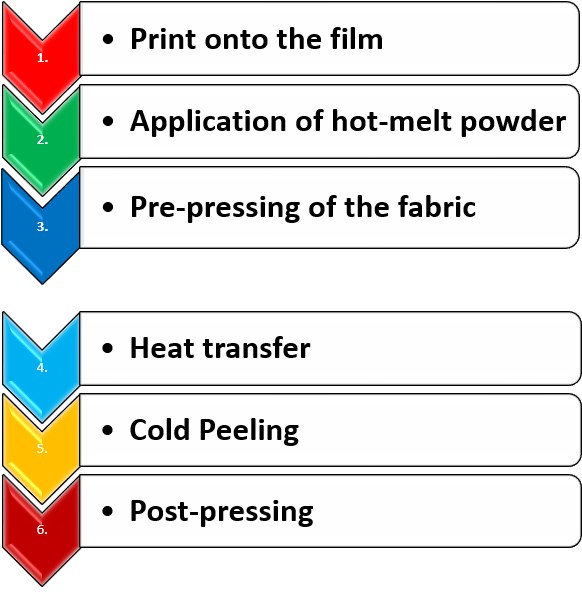

direct-to-Film (DTF) printing process on Fabric:
Below, you will find the complete step-by-step explanation of the DTF (Direct-To-Film) printing process:
Print onto the film:
DTF printers use PET films, also known as DTF Transfer Films, to print onto the film. PET films are more effective at transferring image due to their 0.75mm thickness. For DTF printing, a specialized RIP software will require to handle white and CMYK colors. One can properly print any image or intricate design using this software. Next, the DTF printer prints the image or design directly into the film material. The film weight and the width of the printing machine depend on the printing technique.
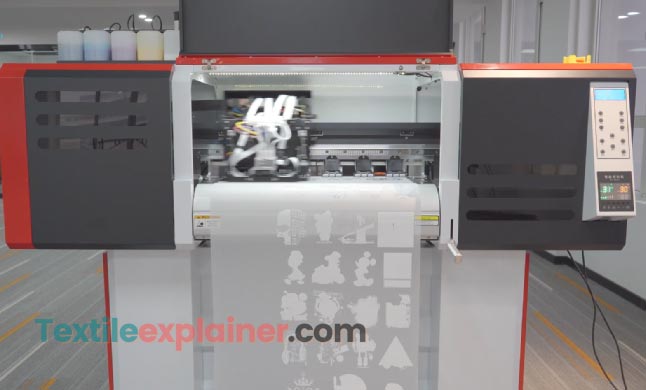
Application of hot-melt powder:
During this phase, the DTF process applies a white granular adhesive substance called hot-melt powder onto the film with the printed image. The hot-melt powder serves to bind the colored pigments from the printer to the printing surface. The powder needs to apply in wet condition. Utilizing a powder-shaking machine aids in even dissemination of the powder and removes any excess from the film. Heating the surface with the printed image subsequently melts the powder. The widely used approach involves placing the film, along with the printed images and powder, into a hot press machine.
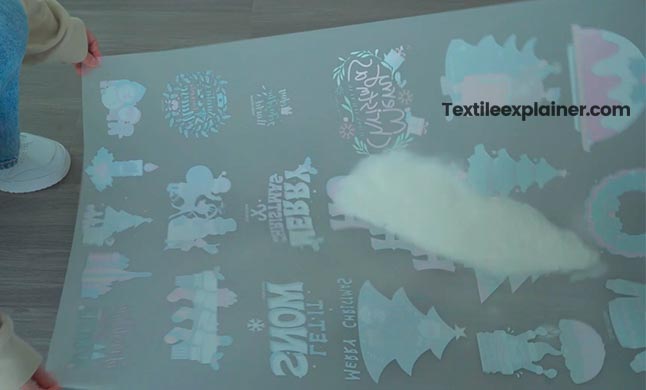
Pre-pressing of the fabric:
Pre-pressing is the term for the initial pressing of the fabric prior to image transfer. The main objective of applying heat to the fabric using a heat press for a duration of 2-5 seconds is to remove moisture from the fabric. In this step, the fabric dehumidification requires before the image transfer procedure.
Heat transfer:
This crucial stage in the DTF printing process involves applying the PET film containing the image and molten powder to the fabric. The main goal of this stage is to successfully achieve a strong adhesion between the film and the fabric. The attachment of the film to the fabric by heating them to a temperature ranging from 1600-1700 C for roughly 15-20 seconds, resulting in a strong bond between the two.
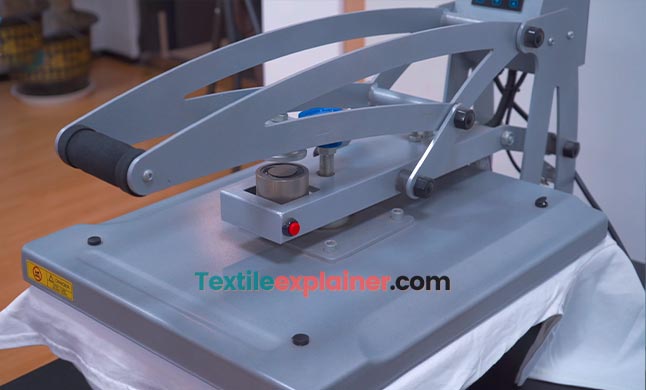
Cold Peeling:
It’s essential to keep in mind that the film needs to cool to room temperature before removing it. The Hot Melt Powder functions as a binding agent, much like amides, to improve the ink’s tensile strength and adherence to the fibers of the fabric. After the film cools sufficiently, peeling off the film reveals the desired design imprinted on the fabric.
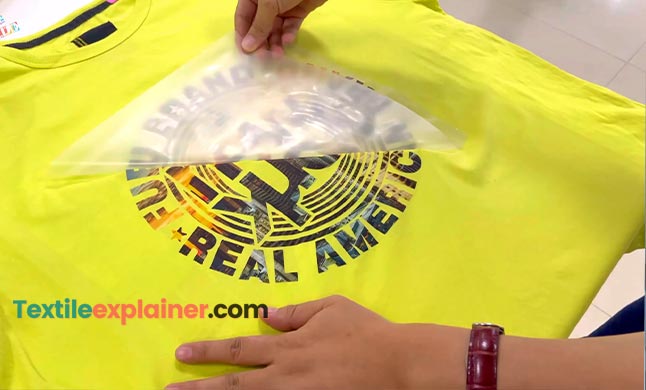
Post-pressing:
Even though this step is optional, it requires factors like wash and rub fastness to get the best outcomes and improve performance. This step involves applying a heat press for 10-15 seconds to the fabric with the transferred design. This extra pressing phase further fuses the pattern to the cloth, enhancing its durability and resilience.
why the DTF (Direct-To-Film) printing process is more convenient in perspective of other transfer printing processes?
Compared to other transfer printing processes, the DTF (Direct-To-Film) printing process has the following advantages:
- It is possible to apply any dye because the system has no limitations by the volatiles or solubility of the dye.
- It can print on a variety of different types of fabric.
- While retaining the same heat as heat/sublimation transfer printing, the technology requires less pressure.
- In comparison to previous approaches, the process requires much less contact time.
- It enables the possibility to transport a variety of substances, including powders, metals, and colors.
- It can achieve a 100% transfer rate.
Things should be consider Before Buying DTF printer:
DTG printing vs DTF printing:
DTG (Direct-to-Garment) printing and DTF (Direct-to-Film) printing are both methods used for printing designs and graphics onto various types of fabrics and garments. While they have some similarities, there are also significant differences between the two processes.
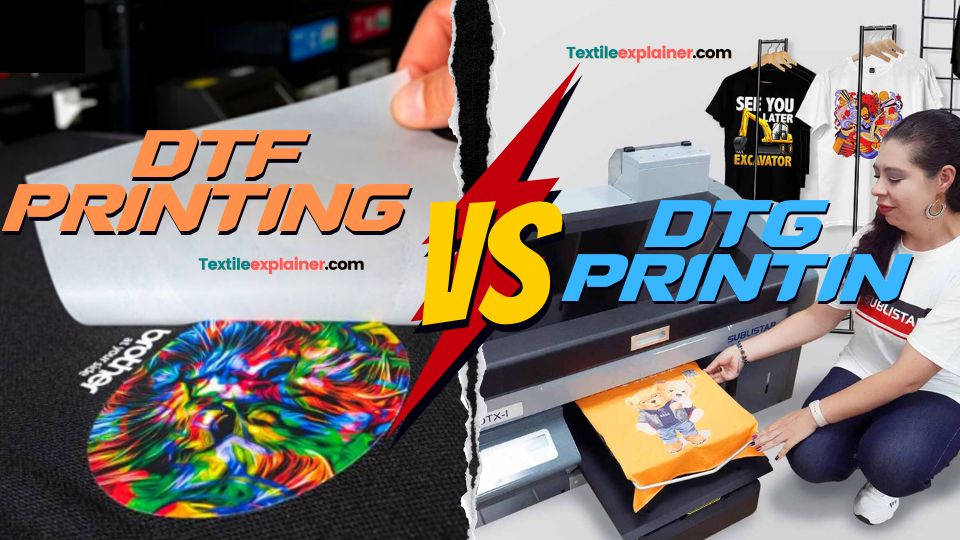
| DTG Printing | DTF Printing |
| The liquid ink used in DTG printers can be repelled by other materials like polyester. As a result, DTG printing works best on 100% cotton clothing. | It is possible to apply any dye because the system has no limitations by the volatiles or solubility of the dye. |
| For optimal results in DTG printing, garments with a composition of over 50% cotton are recommended . DTG printing works best on 100% cotton clothing. | DTF printing works on a variety of different types of fabric. |
| As this printing process involves in direct garments printing, less pressure is needed than DTF printing. | While retaining the same heat as heat/sublimation transfer printing, the technology requires less pressure but more than DTG printing. |
| DTG printing process requires more contact time than DTF printing. | In comparison to previous approaches, the process requires much less contact time. |
| Most suitable for liquid ink form. | It enables the possibility to transport a variety of substances, including powders, metals, and colors. |
| 100% transfer rate can be achieved for garment printing. |
It can achieve a 100% transfer rate in fabric printing. |
Reference:
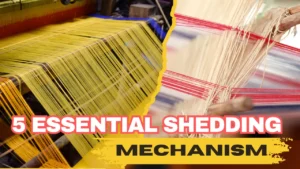
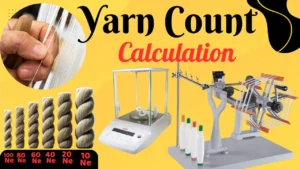

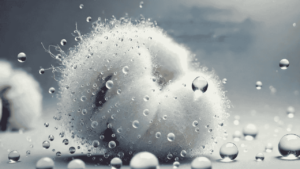
0 thoughts on “How to print Fabrics by using DTF (Direct-To-Film) printing process?”
I didn’t know this before, it’s good to know it today. Thank you sir for explaining it in such a beautiful and simple way
Thanks Shihab for the compliment.Share it to know others.
Such a excellent explain and it will help us know a fabric by using DTF printing very much.Thank you sir for published this essential article.
Thanks Durjoy for the compliment. keep sharing.
Thanks Naimur.